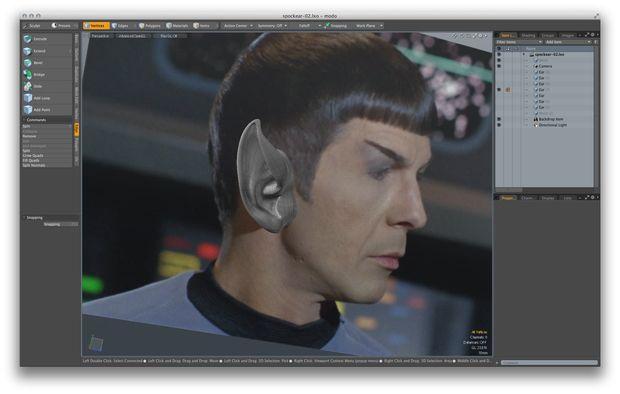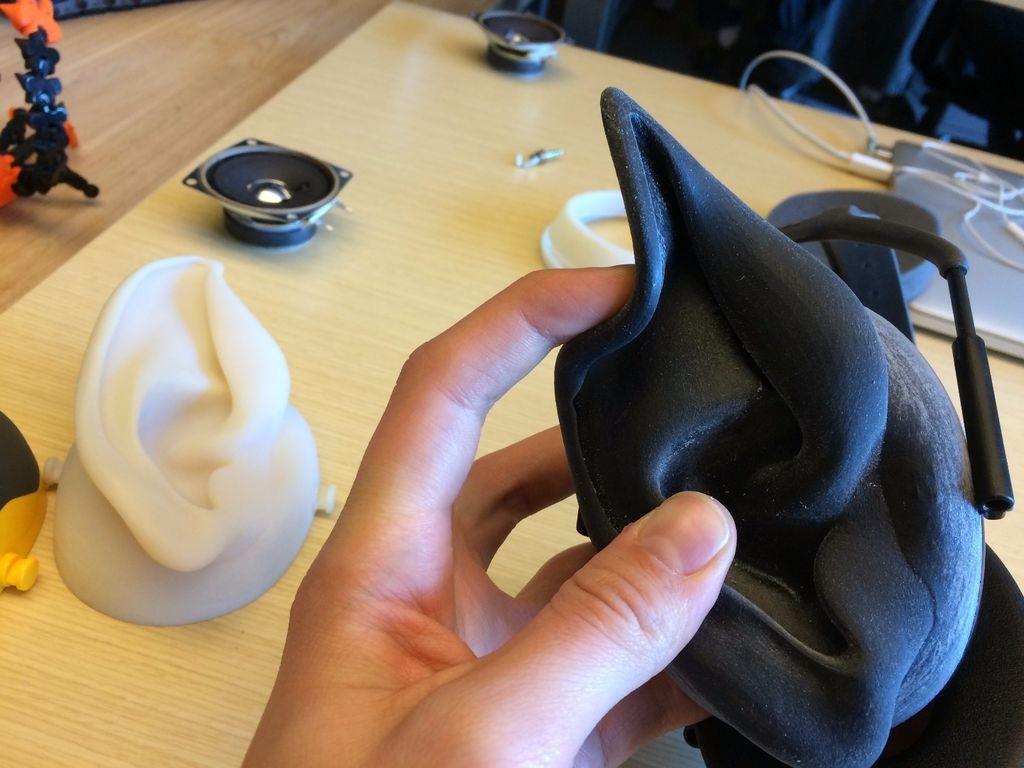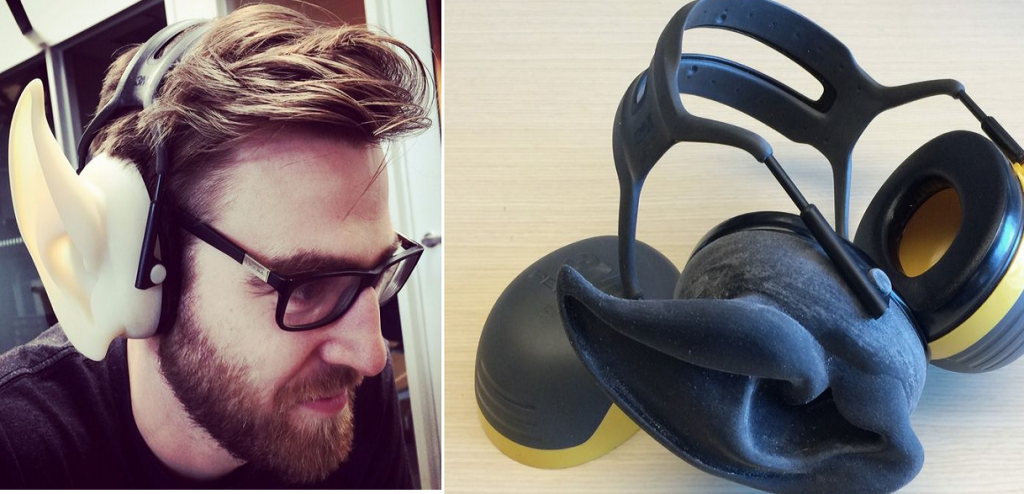 As tributes go, this 3D-printed homage to the world’s most beloved half-human, half-Vulcan, Mr. Spock, is pretty easy to undertake: Follow the step-by-step instructions for 3D modeling and printing your own Spock Ears earmuff or headphone covers. Star Trek impressed us with its high-tech sets (well, they seemed high-tech back in the day) and it seems only fitting that some determination and some cutting-edge tech know-how can produce these witty references to the recently deceased cultural icon, Leonard Nimoy.
As tributes go, this 3D-printed homage to the world’s most beloved half-human, half-Vulcan, Mr. Spock, is pretty easy to undertake: Follow the step-by-step instructions for 3D modeling and printing your own Spock Ears earmuff or headphone covers. Star Trek impressed us with its high-tech sets (well, they seemed high-tech back in the day) and it seems only fitting that some determination and some cutting-edge tech know-how can produce these witty references to the recently deceased cultural icon, Leonard Nimoy.
San Francisco-based designer and Instructables contributor, “vknt,” created the Spock Ears to dress up his 3M Peltor earmuffs. His instructions, photos and STL files are available on his Instructables page. If you don’t have comparable earmuffs, you might want to adapt the design to headphones, which would be equally as cool.
The first step involves taking apart the earmuffs to get some basic measurements. You’ll need to measure the cups because you’ll be fitting your Spock Ears over them eventually. Pay particular attention to the curvature of the cups so that your 3D-printed ears fit snugly over them. Follow the designer’s instructions and get precise measurements before you start modeling.
This tech-savvy Trekkie used Fusion 360 to create the replacement cup over which he planned to fit the ears. It wasn’t a quick process, he recalled, “It took me a few hours of pushing and pulling vertices to arrive at a shape that I was happy with.” Evidently, he had no experience using Fusion 360 and this project was a great way to get acquainted with the software.
Modeling of the ear took place in Modo afterwards. He based his design on a regular human ear and then adjusted it by looking at a photo of Mr. Spock’s ear he found on the internet. Next he needed to combine the two models so he could print the cup-ear design as a single piece (one for each ear, of course). Therefore, you’ll need to merge the two models. “The ear goes deep inside the cup, so I exported the ear and imported it into Fusion 360. Based on that,” he explained, “I cut out a part of the cup, which made it easier to merge the two.”
If you don’t have Modo, try using Meshmixer instead, which is also ideal for merging two separate models–and it’s free!
After merging the models, he printed a prototype using an Objet 3D Printer, although he intends to experiment using consumer grade 3D printers as well. The Objet 3D Printer can print two materials at once, so he experimented by printing the ear in soft rubber and the cup in a harder material. Since the colors of the materials were different, he had to spray paint them to make them look more uniform. The end results were pretty fantastic and inspire us to consider other possibilities, from animal ears to antlers. Get creative and let us know how your project turns out! May the maker spirit live long and prosper! Discuss this project with us in the 3D Print Spock Earmuff forum thread on 3DPB.com.
Subscribe to Our Email Newsletter
Stay up-to-date on all the latest news from the 3D printing industry and receive information and offers from third party vendors.
You May Also Like
Nylon 3D Printed Parts Made More Functional with Coatings & Colors
Parts 3D printed from polyamide (PA, Nylon) 12 using powder bed fusion (PBF) are a mainstay in the additive manufacturing (AM) industry. While post-finishing processes have improved the porosity of...
3DPOD Episode 193: Flow and What’s Possible in 3D Printing with Ricky Wildman, University of Nottingham
Ricky Wildman is working on 3D printing pills, but, as Professor of Multiphase Flow and Physics at Nottingham, he does a whole lot more. His research encompasses the characterization of...
3D Printing Webinar and Event Roundup: March 17, 2024
It’s another busy week of webinars and events, including SALMED 2024 and AM Forum in Berlin. Stratasys continues its in-person training and is offering two webinars, ASTM is holding a...
3D Printed Micro Antenna is 15% Smaller and 6X Lighter
Horizon Microtechnologies has achieved success in creating a high-frequency D-Band horn antenna through micro 3D printing. However, this achievement did not rely solely on 3D printing; it involved a combination...






























